by Ana Paula Biazon Rocha
PronSIG’s online conference, ‘Beyond Intelligibility: Expanding Our Approach to Pronunciation Instruction’, on 25 October 2025, invited participants to look beyond intelligibility in order to explore other factors that also shape pronunciation teaching and learning. Throughout the day, ten different sessions offered a wide variety of perspectives, while participants exchanged experiences and ideas about all things pronunciation in lively discussions during and between sessions. In particular, the opening and closing plenaries, with pronunciation powerhouses Amanda Baker and Donna Brinton, respectively, provided valuable insights and thought-provoking ideas. In this post, we will review three main takeaways from them.
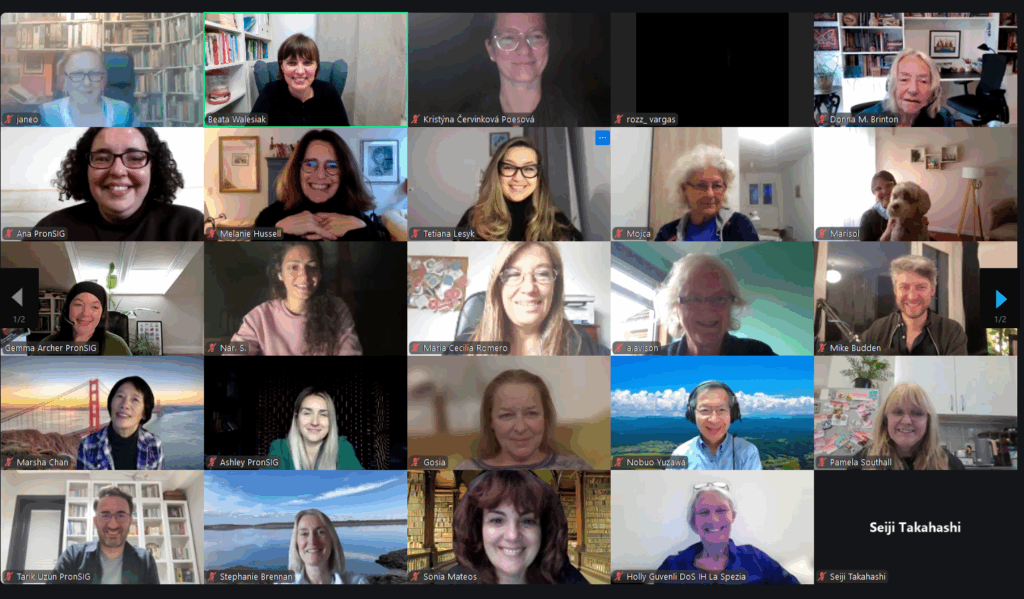
1. Finding a basis for teaching and learning pronunciation
The complexity of pronunciation teaching reflects the major challenges of language teaching and learning. A range of factors—such as linguistic knowledge, contextual constraints, individual differences, teaching approaches and learning outcomes—all interact in dynamic ways when one is teaching or learning a language. Naturally, these same elements come into play when we focus on pronunciation.
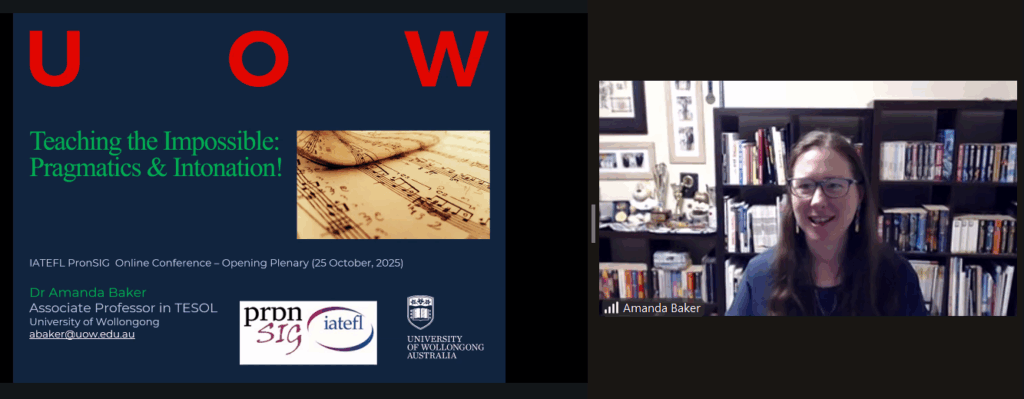
In her opening plenary, ‘Teaching the Impossible: Pragmatics & Intonation!’, Baker highlighted the importance of key areas of linguistic knowledge (such as grammar, vocabulary, phonology, discourse, genre and pragmatics) when providing the basis to discuss how pragmatics and intonation, in particular, shape meaning and contribute to successful communication. In other words, all these elements are interconnected, so when we teach pronunciation, it is useful to draw learners’ attention to how intonation helps convey meaning. For example, take this everyday exchange at a train station:
Clerk: Single or return?
Customer: ? (confused)
If the clerk uses a flat intonation, the question might sound unclear or abrupt. The buyer may not interpret it as a question. However, using a rising intonation on ‘Single’ (↗) and a falling intonation on ‘or return?(↘)’ signals that there are two options to choose from, making the meaning clearer to the buyer.
Clerk: Single (↗) or return?(↘)
Customer: Single, please.
In terms of pragmatics, misunderstandings can also occur. If the buyer asks for clarification (‘Sorry?/Excuse me?/Pardon?’ or ‘Could you say that again, please?’), the clerk might misinterpret this as impatience or rudeness, and repeat the same flat intonation, which will only increase confusion. The buyer may then think that the clerk is annoyed, while the clerk may feel that the buyer is being difficult, when in fact, it is all about intonation.
Helping learners notice how intonation and pragmatics work together can empower them to communicate more effectively and avoid these kinds of breakdowns (for more ideas on how to teach intonation, check this blog post).
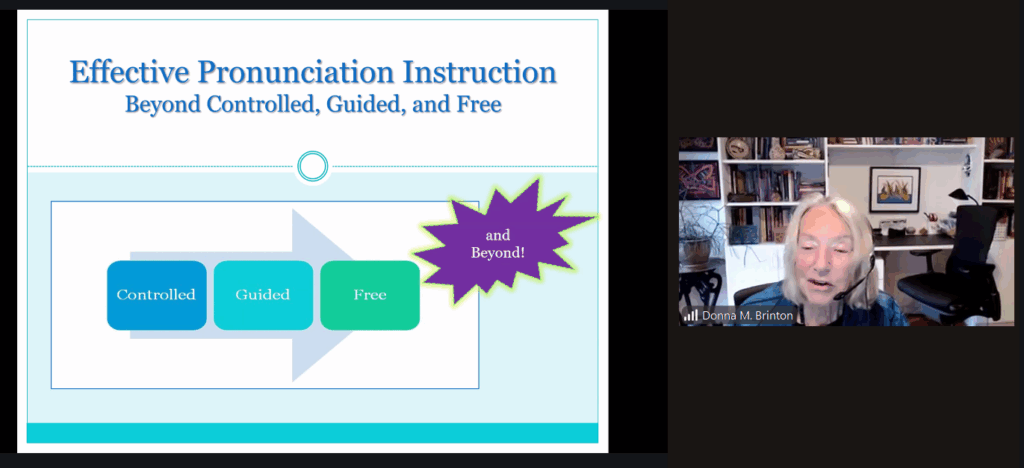
Similarly, Brinton’s closing plenary, ‘Effective Pronunciation Instruction: Beyond Controlled, Guided, and Free’, emphasised that teachers need a solid knowledge base from which to teach pronunciation. This includes knowledge of pronunciation features, awareness of potential learner difficulties and clarity about pedagogical priorities. From this foundation, teachers can make more informed decisions about what aspects of pronunciation to focus on, how to sequence instruction and how to teach pronunciation more communicatively (for further ideas on that, please check this blog post).
In practical terms, this means moving beyond isolated drills or possible decontextualised coursebook exercises, for example, and focusing on meaningful pronunciation tasks that help learners notice, practise and apply pronunciation features in real communication. To elaborate on Brinton’s ideas, teachers might guide learners to explore how intonation changes meaning in short dialogues, record and reflect on their own speech, or engage in roleplays that highlight pragmatic choices. Let’s check the following suggestion of classroom activity:
Classroom activity – Roleplay
Students imagine they are at an information desk in a train station. One student plays the traveller, and the other plays the station clerk. The traveller needs help finding the right train. Both students perform the dialogue twice, changing their intonation and word choice to explore their effects on communication.
Version 1:
Traveller: Where’s the train to Manchester?
Clerk: (flat intonation) Platform 4.
Traveller: Thanks. (walks away)
Version 2:
Traveller: Excuse me, could you tell me where the train to Manchester leaves from? (rising intonation ↗)
Clerk: Sure! It’s from Platform 4, just over there. (friendly, falling intonation ↘)
Traveller: Great. Thanks.
Class discussion:
- How does the change in intonation and phrasing affect the tone of the conversation?
- Which version would make the traveller feel more comfortable?
- Which version would you use if you were in this situation: one, two, none, or a mix of both? Why?
By grounding classroom practice in both linguistic knowledge and learner experience, we can make pronunciation teaching both effective and engaging (for an example of a fun and engaging pronunciation activity, please check this blog post).
2. The pursuit of effective pronunciation teaching: But what does that mean?
In her plenary, Brinton also explained that it is difficult to reach a consensus about what effective pronunciation teaching means. While it is generally agreed that pronunciation instruction should be effective, important questions still remain: What does ‘effective’ look like in practice? Can it be measured? How ‘effective’ is effective enough? This usually resonates with feelings of uncertainty, insecurity or discouragement that many of us face when it comes to pronunciation. We might find ourselves thinking: ‘Pronunciation is already complex, and I’m not that confident teaching it. And now it has to be effective too? That’s a lot to handle!’
That is why it is important to take a step back and reconsider what we are doing, why we are doing it and how. Let’s go back to our learners, recognising their needs, goals and interests, and to the realities of our teaching contexts. From there, we can make informed choices about what will truly support our students in developing their pronunciation skills.
Building on this idea, Brinton pointed out that researchers and practitioners agree that effective pronunciation teaching involves:
- focusing on both segmental and suprasegmental features (if you are not sure about what these features are, please check this blog post);
- using the whole body to demonstrate how pronunciation works;
- providing learners with feedback on their pronunciation;
- scaffolding instruction from description and analysis to controlled, guided and communicative practice (for further information, check the Communicative Framework by Celcel-Murcia et al., 2010, p. 45).
To support this process, Baker also pointed out that teachers now have access to a growing range of tools, such as Automated Speech Recognition (ASR) and Generative AI, which can assist with pronunciation practice and feedback. At the same time, both Baker and Brinton emphasised that while research offers valuable evidence-based insights, it is teachers’ pedagogical knowledge and classroom experience that ultimately shape what ‘effective’ pronunciation teaching looks like for their learners.
So, instead of obsessing over a single definition of effectiveness, we can maybe start by asking ourselves:
- How do I incorporate pronunciation into my lessons?
- How do my learners respond to it?
- What is working well? What could I refine or rethink?
3. The more informed, the better!
To enrich your knowledge base of Baker and Brinton’s plenaries, please check Baker (2021) and Brinton et al. (2022). We are also looking forward to Baker’s article in the February 2026 issue of Speak Out! when she will give us more details about what she discussed in her plenary. Stay tuned!
If you are interested in watching the recording of the plenaries as well as the other sessions from our online conference, they will be available in the IATEFL shop for a donation in the near future. For further information, please email [email protected] .
If you registered for our conference, you should have already received an email with the links to the recordings. If you haven’t received these, check your spam folder. If you have definitely not received the links, email [email protected] for help.
For more on pronunciation instruction, please check our previous blog posts. Don’t forget to leave your comments below and follow PronSIG on social media.
References
Celce-Murcia, M., Brinton, D. M., & Goodwin, J. M. (with Griner, B.). (2010). Teaching Pronunciation: A Course Book and Reference Guide. Second Edition. Cambridge University Press.
Baker, A. (2021). ‘She’ll be right’: Development of a coaching model to clear and fluent pronunciation in Australia. English Australia Journal, 27(1), p. 27-39.
Brinton, D., Burri, M., & Baker, A. (2022). Beyond Controlled, Guided, and Free Practice. In J. Levis, T. Derwing, & S. Sonsaat-Hegelheimer. (Eds.), Second Language Pronunciation. Bridging the Gap Between Research and Teaching (pp. 151–173). Wiley Blackwell.
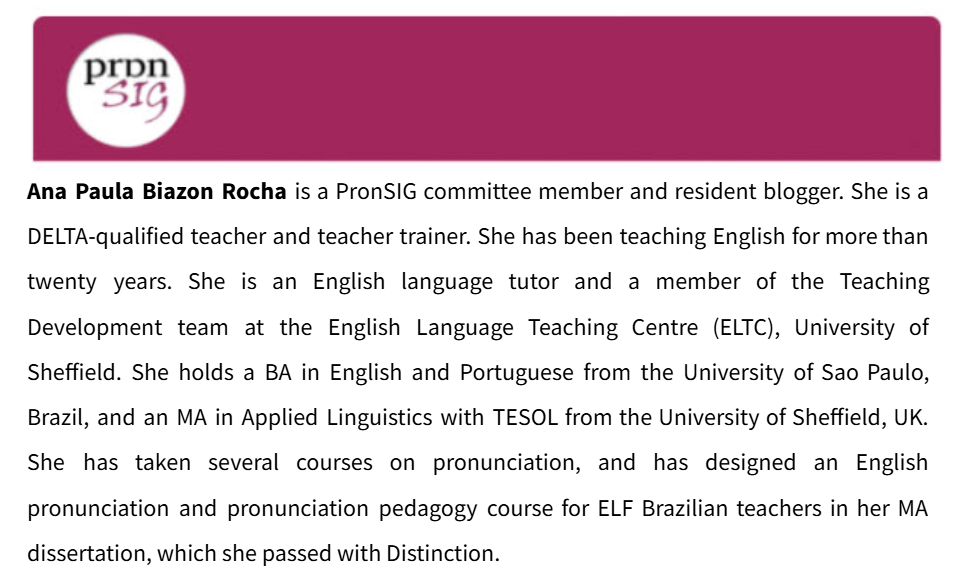

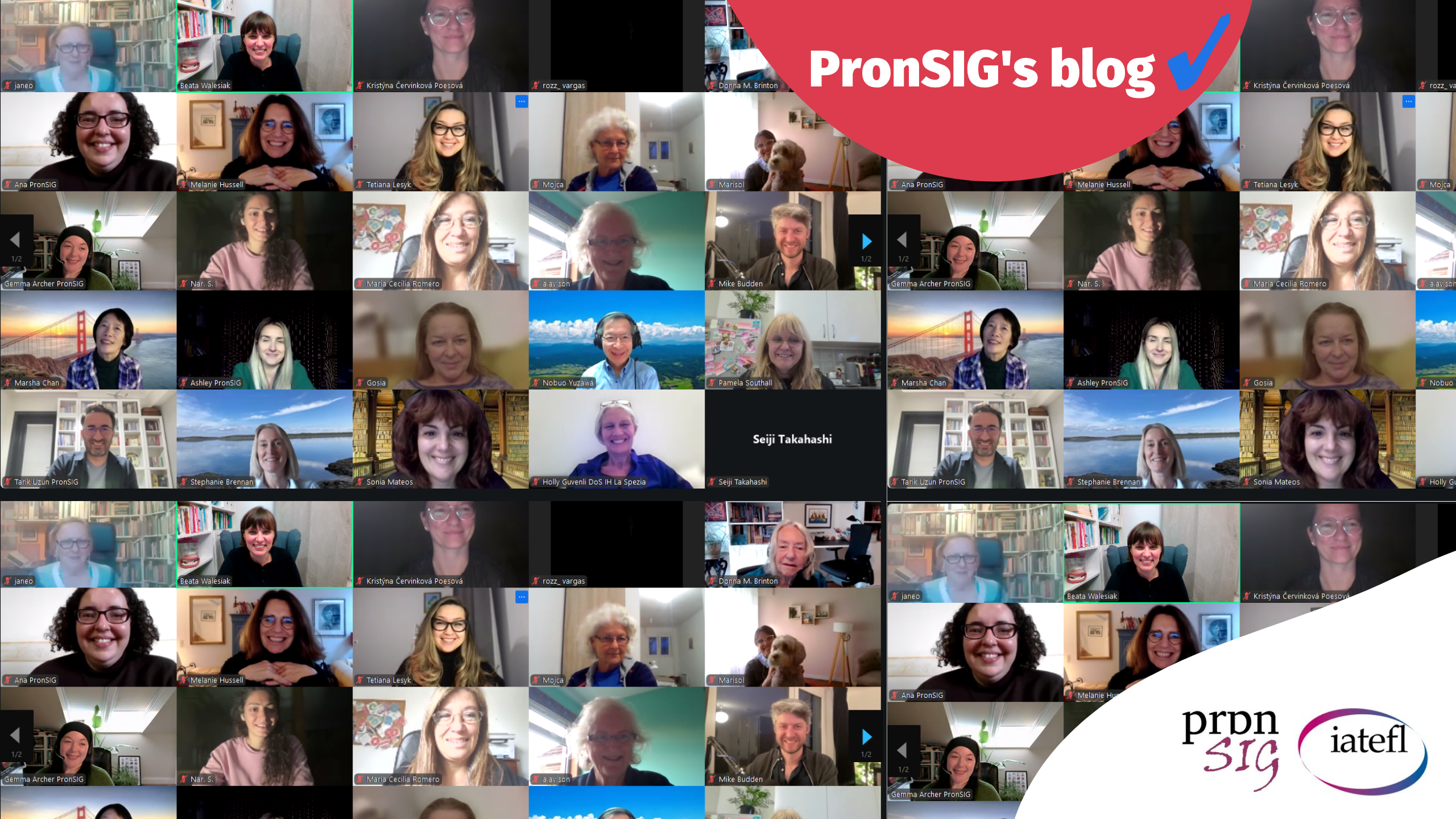
Has anyone please got a copy of John Levis’ refs from the 25 Oct talk: Beyond Intelligibility: Pron integrated into communication. Wrote and asked him but no reply.
Thank you.
Hi Jane.
Many thanks for this.
We’re on it, and as soon as we hear anything, we’ll let you know, ok?
Best. 🙂